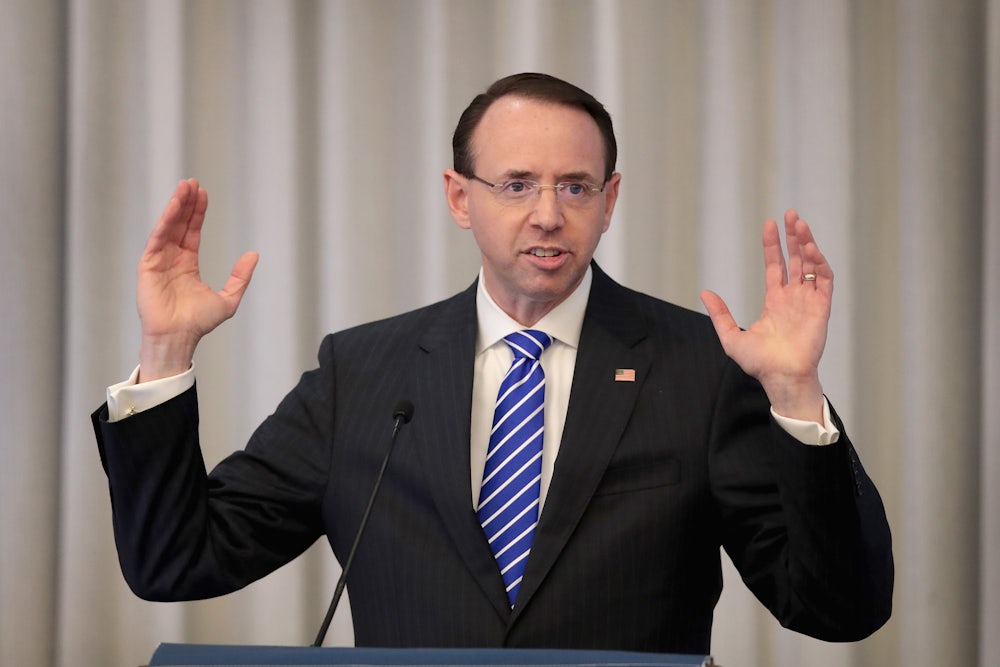Monday morning was a rollercoaster ride of conflicting news coverage about the status of Rosenstein within the Trump administration. Early in the day, there were reports that Rosenstein was heading to the White House with the expectation of being fired. Axios broke the story that Rosenstein had resigned as deputy attorney general. Soon thereafter, CNN offered another version, that Rosenstein had quit because he was expecting to be fired.
Rosenstein’s status is important because his position makes him one of the bulwarks protecting the Mueller investigation from presidential interference. It’s widely expected that were Rosenstein to be fired, President Donald Trump would have a path to end the special counsel’s inquiry into Russian interference in the 2016 election.
The contradictory reporting caused much head scratching among those following the news:
Rod Rosenstein, who has either resigned or not, or been fired or not, or is on the way to the White House to resign or be fired, or not, is apparently in a state of quantum (un)employment.
— Peter Suderman (@petersuderman) September 24, 2018
Ultimately, it turned out that Rosenstein had neither been fired nor quit but still has job. He is reportedly going to talk to President Trump on Thursday.
All in all, it was a sorry day for the press:
Rod Rosenstein has not resigned and has not been fired.
— Kaivan Shroff (@KaivanShroff) September 24, 2018
The American media in its current form is an abject failure.
The confusion of the morning appeared a byproduct of two interrelated factors: factionalism within the Trump White House (where different parties selectively leak to influence outcomes) and a scoop-hungry press that relies heavily on these leaks to understand White House court intrigue. One major problem with breathless coverage that is quickly retracted is that it feeds into Trump’s favorite argument that the media is serving up “fake news.”
By early afternoon, Vanity Fair was reporting that the entire affair might have been a “smoke bomb” to distract from Supreme Court nominee Brett Kavanaugh’s confirmation troubles: “According to a source briefed on Trump’s thinking, Trump decided that firing Rosenstein would knock Kavanaugh out of the news, potentially saving his nomination and Republicans’ chances for keeping the Senate.” Readers might be forgiven for distrusting anonymous sources at this point.
